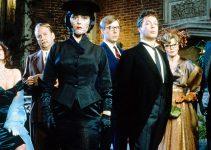Breathless (1960) – 7.5/10 – Legendary director Godard with a revolutionizing filming style
BREATHLESS is a crime caper from French director Jean-Luc Godard, one of the greatest directors of all time. BREATHLESS was his first feature film after a few short films. He helped revolutionize a new filmmaking style called the French New Wave, which introduced techniques and thought based on realism. This era also saw the rise of Italian Neorealism, which portrayed everyday life with authenticity. While different in characteristics, the French New Wave also built upon neorealism by experimenting with new ideas and technical styles. Both altered the traditional styles created by Hollywood decades earlier.
Michel, a small-time crook, flees the police after him for murder. While on the run across Paris, he rekindles his relationship with an American girl, Patricia. He is a troubled sociopath operating on lies, delusion, poverty, and disregard for his photo published in the local newspapers. His goal is to collect money from another crook who owes him a debt and to escape to Italy with Patricia. The police continue to zero in on him, but Michel continues business as usual.
Godard’s filming style is distinct from the typical Hollywood movies that came. The experimental camerawork, personal storytelling, ingenious scenes, cinematography, and editing helped reshape the future of cinema. The amazing cinematography took me to 1960s France. It’s like watching a documentary captured using portable equipment and natural lighting. Traditional directors, such as Hitchcock, believed every shot must serve a purpose and advance the story. With the French New Wave, that perspective shifted. Directors often keep the plot loose and non-linear, adding scenes and moments that don’t impact the plot, character, or vision. In BREATHLESS, for example, the main character wanders about doing nothing or makes random phone conversations. The film provides no hints of what’s coming, removing the predictability factor. Shots might continue, showing little happening. Limited script, underdeveloped characters, and improvised dialogue are all possible. Like life itself, BREATHLESS feels choppy, confusing, and inconsistently depicted. But it’s intentional and part of the style—central to Godard’s focus. The music seems fitting for the era and location.
Would I recommend this? Probably not. It may be a personal thing, but the story was jumbling and confusing. As a writer, I believe every scene depicted should be there for a reason. If it serves no purpose, cut it. Each shot must hold a purpose, so if you randomly paused, everything in that shot should belong. This film breaks that notion, and the focus is no longer on the story. I’m not sure if it’s for everyone, and it might not be the best introduction to the French New Wave. The later, more mature films using this style might be the ones to start with rather than the raw original. My rating is 7.5/10.
*Any trivia facts were obtained from IMDB’s trivia page and plot/basic history/names information from Wiki




